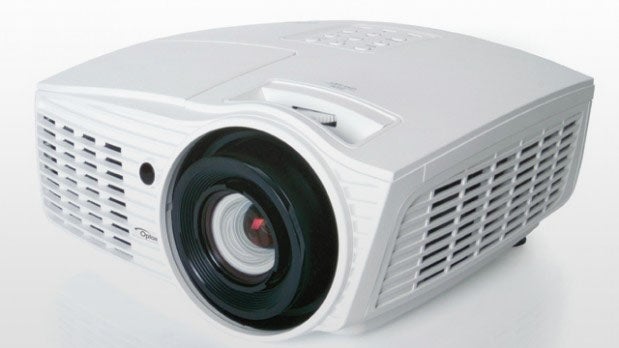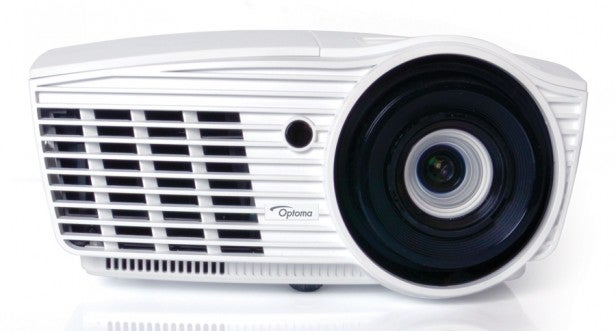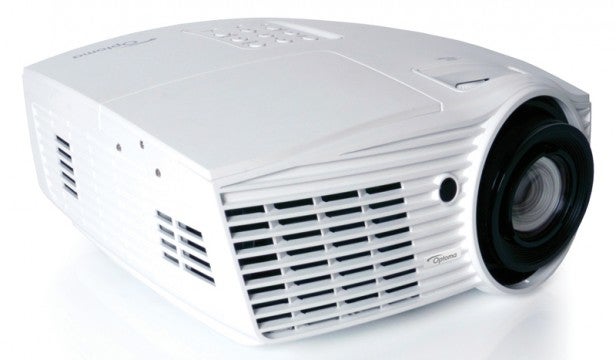Optoma HD50 Review - Picture Quality Review
Picture Quality
A basically very good home cinema projector with a couple of flaws

Sections
- Page 1 Optoma HD50 Review
- Page 2 Picture Quality Review
- Page 3 Conclusions Review
Optoma HD50: Picture Quality
At first we didn’t warm to the HD50’s pictures as much as we’d hoped to. Colours looked slightly off and unbalanced, with some tones – especially yellows and greens – feeling a bit over-dominant, and causing skin tones to look a little sickly. The Reference setting delivers a more even colour response, but we found this mode a bit flat and lifeless, chiefly because it emphasizes the HD50’s chief picture weakness: a slightly average black level response. In other words, it makes the common mistake of just trying to work to an industry standard without taking into account the strengths and weaknesses of its own picture system.
Following the set up tips described in the previous section – perhaps using the Cinema preset as a starting point – results in a much more engaging experience, as you manipulate the image to bring out its strengths better. The first of these strengths is brightness. Images really look punchy and dynamic, with vibrant colours and a degree of genuine contrast range that’s rare in the budget projection market.
While manipulating the Brilliant and Pure Colour tools – or the full colour management system – didn’t completely remove the slightly sallow look to colours noted earlier, we did manage to achieve a comfortable blend of rich but balanced saturations, where you feel engaged with the picture as a whole rather than having your attention drawn to just certain parts of it.
Also looking very agreeable for the HD50’s money is its motion handling. Even with the Pure Motion mode deactivated movement across the screen looks clean, crisp and natural. We were impressed, too, to see absolutely no trace of the fizzing noise over moving skin tones that can still be a feature of single-chip DLP projection.
While we felt zero need to use Pure Motion when watching 24p Blu-ray movies, though, we were impressed to find that Optoma’s motion processing engine is strong enough to be usable with sports content without leading to the excessive appearance of common motion processing issues like haloing around moving objects or flickering over areas of very fast motion. So long, at least, as you use the processing on one of its relatively tame settings. This combined with the rich colours and high brightness levels – which work nicely in rooms that have a little residual ambient light in them – to make the HD50 a particularly tempting proposition for sports fans despite its apparent home cinema focus.
The biggest surprise about the HD50’s pictures, though, comes from Ultra Detail. This really does work well. Switching it on makes you feel like the image you were watching before wasn’t focused properly. But it’s not just the extent to which the UltraDetail system sharpens the image that stands out; it’s also how cleverly it does it. It’s clever enough to spot the difference between source noise and ‘real’ image content, only applying its sharpening ways to the good stuff. This means the picture looks crisper without looking much noisier – at least if you just stick with the default UltraDetail setting (the HD one can cause a little ringing and fizziness). 
Die-hard purists may refuse to use the UltraDetail system on principal, we guess, but personally we felt it gave images an enjoyable ‘kick’ in the right direction.
One picture area where we didn’t feel wholly satisfied with the HD50 was its black level response. For despite the much-vaunted dynamic contrast system continually adjusting the image’s contrast without causing the distractingly OTT light level shifts such systems can cause, it doesn’t deliver quite as much black level depth and intensity as we’d really like to see, even for £1000.
Because of this, dark scenes sometimes feel a touch unbalanced and muted – though the HD50 does generally do well where shadow detailing is concerned.
We also sometimes spotted traces of the rainbow effect on the HD50, in the form of almost subliminal stripes of red, green and blue over very bright areas when they sit alongside very dark ones. This makes it worth demoing an HD50 before you buy if you can, as some people are exceptionally susceptible to seeing the rainbow effect. Though from an objective perspective, the level of rainbowing is actually quite restrained for such a bright DLP projector.
One final minor flaw we noticed was clipping in very bright areas. During the shot in the final Harry Potter film where a dragon escapes from Gringotts and flies away over rooftops, the areas of the picture where sun breaks through the clouds look a little too white – like holes torn from the picture rather than natural parts of it. But most people probably won’t notice this clipping, especially as the sort of image content that reveals it is quite rare.

